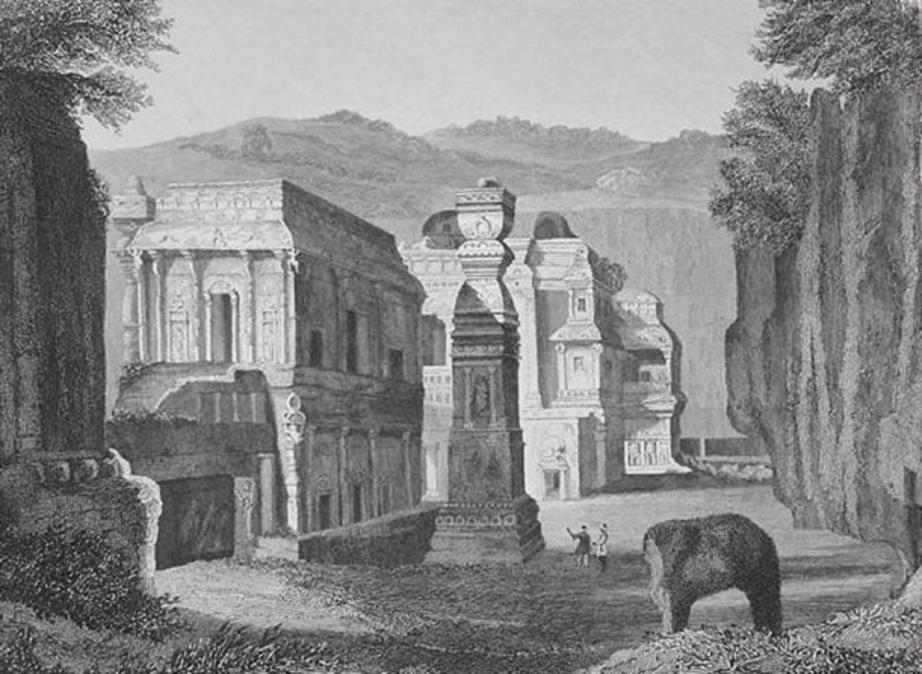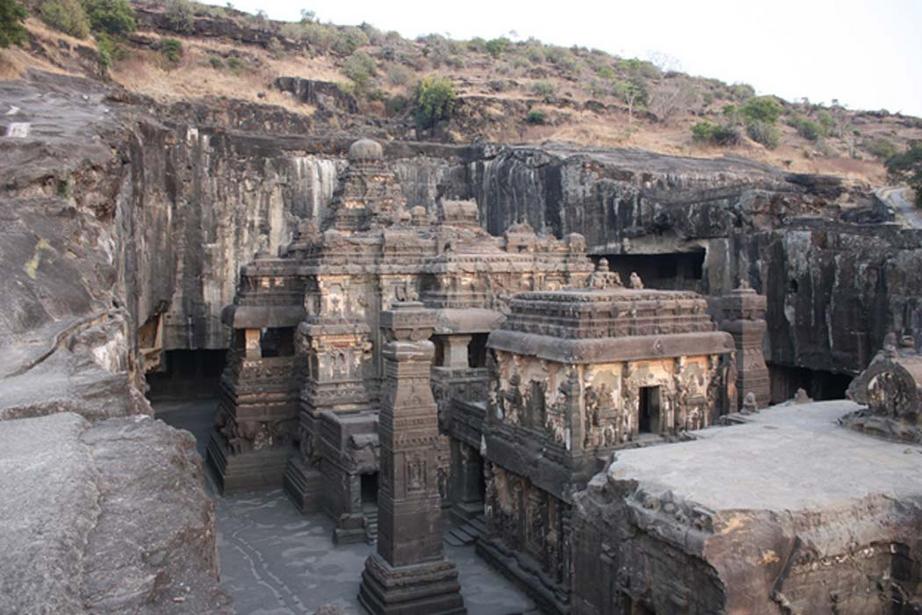Kailasa Temple: how was this massive Hindu temple carved out of a single rock?
The Kailasa Temple has been dubbed as ‘Cave 16’ of the Ellora Caves, and is notable for being the largest monolithic structure in the world that was carved out of a single piece of rock. Apart from the temple’s impressive size, it is also remarkable for its sculptures, as well as for the fine workmanship of its other architectural elements.
Construction of the Kailasa Temple
The Kailasa Temple [known also as the Kailasanatha (which translates as ‘Lord of Kailasa’) Temple] is an ancient Hindu temple located in the western Indian region of Maharashtra. This temple is part of the Ellora Caves, a religious complex consisting of 34 rock-cut monasteries and temples.
This temple derives its name from Mount Kailasa, the Himalayan abode of the Hindu god Shiva. It is generally believed that this temple was constructed in the 8th century AD, during the reign of Krishna I, a ruler of the Rashtrakuta Empire. As the Kailasa Temple is supposed to represent the sacred mountain of Shiva, this temple was dedicated to this particular Hindu god. The construction of the Kailasa Temple is thought to have taken place between 757 and 783 AD. It has been commonly estimated that over this period of about two and a half decades, a total of 200,000 (other estimations range from 150,000 to 400,000) tons of rock were excavated out of a vertical basalt cliff in the Charanandri Hills to form the magnificent temple. It may be added that the temple was carved from top to bottom with only simple hammers and chisels.
 Picture of the hall on one side of the main structure of Kailash Temple.
Picture of the hall on one side of the main structure of Kailash Temple.
A Medieval Legend About the Temple
According to a medieval legend told by the Marathi people of Maharashtra, the Kailasa Temple was actually built within a week. This legend revolves around a queen whose husband was very ill. The queen prayed to Shiva, asking the god to heal her husband. In return for this favor, the queen vowed to build a temple dedicated to him and fast until the temple was completed. The queen’s prayers were answered, and she proceeded to fulfil her vows. The queen’s architects, however, were concerned about her fast, as such a grand temple would require a long time to complete. One of the architects, whose name was Kokasa, however, assured the queen that he could build the temple in a week. Kokasa kept his word, and began carving the temple out of the rock from the top to the bottom. In a week, the Kailasa Temple was finished.
 "Temple of Kailasa at Ellora, India," a steel engraving, 1857.
"Temple of Kailasa at Ellora, India," a steel engraving, 1857.
The Kailasa Temple’s Intricate Sculptures and Carvings
In any case, the resulting Kailasa Temple is a masterpiece worthy as a tribute to the gods. Apart from the ingenuity needed to accomplish this feat, the Kailasa Temple is also noteworthy for its numerous sculptures. In the main courtyard, for example, there is an image of Nandi, the sacred cow of Shiva, who is facing the Shivalinga. These traditional features can be found in all temples dedicated to Shiva. At the base of the temple, elephant sculptures may be seen, which gives the viewer an impression that the whole structure is being supported on the backs of these beasts.
 The temple’s roof.
The temple’s roof.
Furthermore, various intricately carved panels may be found in the Kailasa Temple. Some of these, for example, depict scenes from the two major Hindu epics, the Mahabharata and the Ramayana. Additionally, in the southeastern gallery of the temple, there are 10 panels depicting the different avatars of the Hindu god Vishnu.
 Panels depicting scenes from the Mahabharata and the Ramayana.
Panels depicting scenes from the Mahabharata and the Ramayana.
The Temple that Could Not be Destroyed
There is an interesting tale about the Kailasa Temple that dates to the Mughal period. During the reign of the Emperor Aurangzeb, an attempt was made by the Mughals to destroy the temple. Aurangzeb had already destroyed countless Hindu temples, and had intended to add the Kailasa Temple to this list. It is said that 1000 workers were sent to dismantle the temple. Three years passed, and the temple only suffered minimal damage, i.e. several disfigured or broken statues. Realizing that it was impossible to completely destroy the temple, Aurangzeb finally gave up.
For full references please use source link below.

